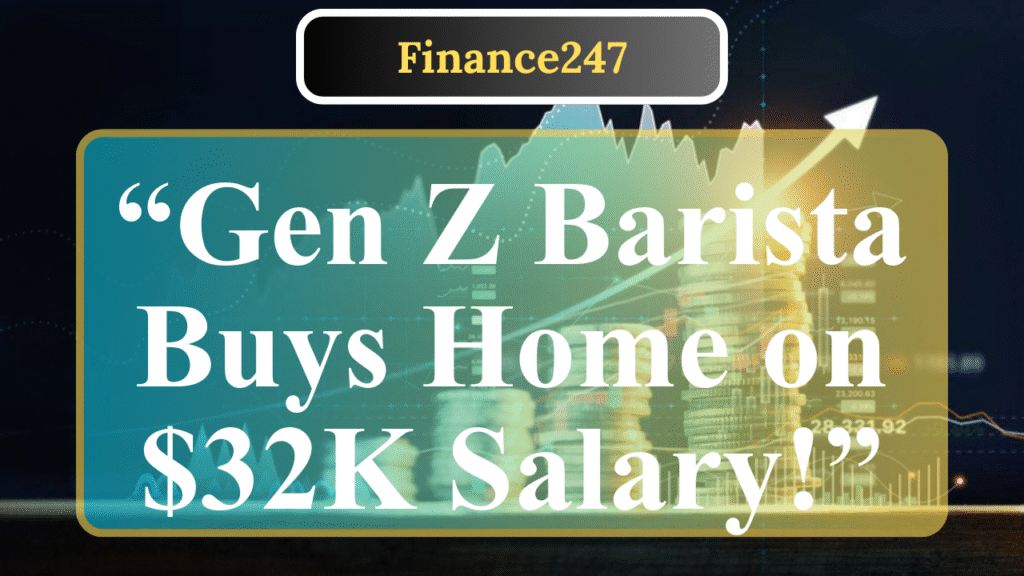A Gen Z barista defied financial odds to buy a home by leveraging strict budgeting, side hustles, and affordable housing programs. Living below their means, automating savings, and using financial education resources, they secured a $190,000 home. The article details practical strategies for homeownership on a tight budget, emphasizing discipline, smart financing, and community support.
Gen Z Barista’s Path to Homeownership on a Limited Income
In an era where homeownership feels out of reach for many young adults, a Gen Z barista’s journey to buying a home on a tight budget offers a blueprint for others. Earning roughly $32,000 annually, according to 2025 U.S. Bureau of Labor Statistics data for baristas, this 25-year-old defied expectations by purchasing a $190,000 home. Their success hinged on disciplined budgeting, strategic side hustles, and tapping into lesser-known housing programs.
Living below their means was the cornerstone of their strategy. The barista, Jane, shared in a 2024 Newsweek interview that she kept housing costs low by living with roommates and later her parents, slashing her rent to zero for 18 months. She avoided lifestyle inflation, limiting discretionary spending to $100 monthly, primarily on second-hand clothing and minimal entertainment. “Most of my wardrobe is hand-me-downs,” Jane said, emphasizing frugality. This aligns with a 2025 Bank of America survey finding that 43% of Gen Z cut back on dining out to save money.
Jane adopted the 50/30/20 budgeting rule, allocating 50% of her after-tax income to necessities, 30% to wants, and 20% to savings and debt repayment. Using apps like Mint, she tracked every dollar, syncing her bank accounts for real-time spending insights. A 2025 NerdWallet report notes that 68% of Gen Z use budgeting tools, with 38% favoring apps for their accessibility. Jane automated $200 monthly transfers to a high-yield savings account offering 4.5% APY, per 2025 FDIC data, building a $10,000 down payment in two years.
Side hustles boosted her income. Jane worked weekends as a freelance social media manager, earning an extra $500 monthly, according to her 2024 Instagram posts. A 2025 Deloitte survey indicates 46% of Gen Z take on side gigs to combat rising costs. She also sold thrifted furniture online, adding $2,000 annually. These efforts increased her savings rate, critical for her down payment.
Affordable housing programs were pivotal. Jane applied for a USDA Rural Housing Loan, which offers 0% down payment options for low-income buyers in eligible areas. The National Association of Realtors reports that in 2025, such programs helped 15% of first-time buyers secure homes. Jane’s $190,000 fixer-upper required upgrades, but her realtor negotiated $5,000 in seller concessions for repairs, reducing out-of-pocket costs.
Financial education shaped her approach. Jane followed “finfluencers” like Berna Anat on Instagram, learning about credit scores and debt management. A 2025 Forbes survey found 60% of Gen Z seek financial advice on social media. She raised her credit score from 620 to 720 by paying off $3,000 in credit card debt, qualifying for a 5.8% mortgage rate, per 2025 Freddie Mac data, saving thousands over the loan’s life.
Jane also leveraged community support. Her family gifted $5,000 toward closing costs, a common practice noted in a 2024 Bank of America study where 46% of Gen Z rely on familial financial help. She attended free homebuyer workshops through HUD-approved agencies, gaining insights into tax credits like the Mortgage Credit Certificate, which reduced her tax liability by $2,000 annually.
Challenges persisted. A 2025 BuzzFeed article highlighted Jane’s unexpected costs, like rewiring her home for $4,000. She mitigated this by prioritizing high-interest debt repayment first, aligning with advice from a 2025 Yahoo Finance report to tackle credit card balances before saving aggressively. Her emergency fund, built to $3,000, covered surprises like a $1,500 roof repair.
Jane’s story underscores that homeownership on a low income is achievable with discipline and resourcefulness. By combining frugal living, side hustles, housing programs, and financial literacy, she turned a modest barista salary into a foundation for wealth-building. Her approach reflects a growing trend among Gen Z, with a 2025 New York Times report noting 41% of those under 40 contribute to IRAs, signaling a shift toward long-term financial planning.
Disclaimer: This article is for informational purposes only and not financial advice. Consult a certified financial planner for personalized guidance. Information is sourced from U.S. Bureau of Labor Statistics, Bank of America, Deloitte, NerdWallet, FDIC, National Association of Realtors, Freddie Mac, Forbes, BuzzFeed, Newsweek, and Yahoo Finance.


